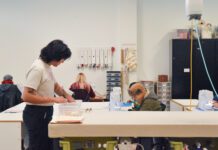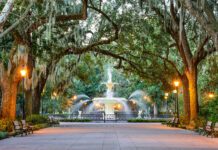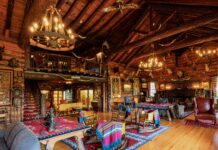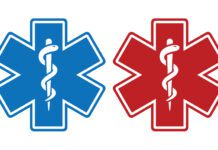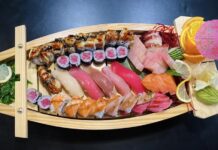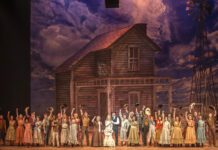Osiyo.
Ha’-We.
Chokma.
Of the 38 federally recognized tribes in Oklahoma, these are three – Cherokee, Osage, Chickasaw – of their indigenous greetings. To ensure future generations won’t ever have to say goodbye to their history, culture and language, many tribes have launched meticulous preservation efforts.
These efforts include teaching, archaeology, archiving, renovation – and a lot of persistence. Currently, 566 federally recognized tribes exist in the United States, though full-blooded Native Americans (and Alaska Natives) compose only 1.2 percent of the population, per 2012 Census Bureau estimates. In the wake of conventional American society, instructing new generations about their distinctive heritage and culture is more important than ever.
Text me in Cherokee
The Cherokee Nation, spread out like a blanket among 14 counties in northeast Oklahoma, comprises the largest tribe in the U.S.
Cherokee is a word that has been spelled many ways and has been infused with many possible meanings and origins. Currently, Cherokees call themselves Aniyvwiya, which translates to the “Real People.”
These Native Americans never lived in teepees; instead, Cherokee dwellings were historically houses created of mud and clay with roofs of brush and river cane. By the 1700s, many Cherokees lived in log cabins and even clapboard houses.
In the early 1800s, Cherokee statesman Sequoyah developed the first written language of any Native American tribe. The Cherokees “come from a rich tradition of innovators,” says Principal Chief Bill John Baker.
“We published a newspaper, written in both Cherokee and English,” Baker says. “We created a legislature and a strong sense of self-governance that persists today.”
To protect the Cherokee language, the tribe has kept pace with new technology. “We have worked with Apple to incorporate our language into the operating systems for Macs, iPods, iPhones and iPads,” Baker says. In the past year, Cherokee also was integrated into Windows 8 and Gmail.
“Our Cherokee children can text faster than they can speak oftentimes, and entirely in Cherokee,” says Baker. “To watch them use their native language on modern devices is really something to see.”
The nation created the Cherokee Language Immersion School to teach children how to speak this well-developed tongue. “Beginning in kindergarten and advancing through the sixth grade, children speak, read and write their lessons, only in Cherokee,” Baker says. “It’s amazing to watch our young people grow up bilingual.”
In addition to preserving its language, the tribe has preserved its historic buildings. One such is the 1844 Cherokee Nation Supreme Court building, the oldest government building in Oklahoma.
Back then, the building housed the tribe’s Supreme and District courts; it also held the printing press for the Cherokee Advocate (now called the Phoenix), the official publication of the tribe and the first newspaper in Oklahoma. The historic building is now a museum that educates future generations about the Cherokee judicial system, language and newspapers.
The tribe’s most recent projects include renovation of the Cherokee National Capital, which currently houses the judicial branch of government, and the Cherokee National Prison, according to Baker.
Four themed tours – Cherokee History Tour, Cherokee Old Settler Tour, Civil War History Tour and Will Rogers History Tour – help people explore their cultural heritage at historic sites. In the program’s first year, 1,700 people took these tours, says Baker.
Tours are offered every Saturday to the general public.
Imparting The Arts
The Osage Nation, composed of Wah-Zha-Zhi people originally known as “Children of the Middle Waters,” is headquartered in Pawhuska, the heart of Oklahoma’s largest county – Osage. During historic times of war, the Osage were feared as tall, fierce warriors by neighboring tribes. They were highly ranked among the old hunting tribes of the Great Plains. However, as hunter-farmers, the Osage people did not conform exactly to the lifeways of either woodland or plains tribes.
The Osage Nation became the only (at the time) American Indian nation to purchase its reservation in 1870. Today, the Osage is preserving its customs and art forms through the Osage Cultural Center, which opened in 2004. Vann Bighorse, who became the Pawhuska center’s director in 2007, says he is proud of his tribe for being able to assert its sovereignty in 2006. At that time, the tribe established a constitution with a three-branch form of government, which is in place today.
The 2006 Osage constitution “opened the door” for culture and language preservation, says Bighorse. “They created a language and cultural department with the vision to teach Osage people and the community about our tribal ways of life,” he says. “Since then, that’s what we’ve been doing.”
From fall through spring, the cultural center holds free cultural art and traditions workshops and lectures. Here, Osages can learn how to create “our clothing and other intricate art forms that were getting to be very much endangered,” says Bighorse.
Fingerweaving classes teach the tricky but beautiful art of hand-weaving more than a hundred strands of dyed yarn (buffalo hair was used in “the old days on the prairie,” says Bighorse) into a patterned belt. Some classes teach the history and ceremony of the Osage woven baby board. Still others teach the art of ribbon work, where ribbons in “traditional Osage colors” of turquoise, purple, green and red are cut and folded into patterns.
Workshops also instruct people on how to make Osage moccasins and headdresses. The center has generated a lot of interest and classes fill up fast, Bighorse says. All the materials are provided by the center, and participants are able to keep their finished products.
For the past four years, the Osage Nation has also held an annual cultural walk, which commemorates the tribe’s movement from Kansas to Oklahoma, “to the reservation here,” Bighorse says.
This year, the Osage Nation Tribal Museum Library and Archives celebrated its 75th anniversary. Established in May 1938, it is the oldest tribe-owned museum.
Though the center slows its schedule during the summer months – to focus on Osage ceremonial dances – they’ll gear up again in fall to keep their tribe’s art forms and lifeways alive for generations to come.
Archiving And Thriving
The Chickasaw, one of the last tribes to move during the “Great Removal,” have called south-central Oklahoma its homeland since the mid-1800s. Historically, the Chickasaw people – one of the Five Civilized Tribes – were revered as “Spartans of the Lower Mississippi Valley.”
This tribe of “unconquered and unconquerable” warriors lived an agrarian lifestyle in sophisticated towns with a highly developed ruling system, laws and religion. Chickasaws built some of the first schools, banks and businesses in Indian Territory.
Chickasaw people have relied on oral storytelling to pass down their history, culture, beliefs and traditions through generations. Their legends explain natural phenomena, describe one’s place in the universe and encourage virtues. Chickasaw elders believe passing on ancient knowledge was and is a sacred obligation.
One important legend tells about the beginning of the Chickasaw people, and how they found homelands in the Mississippi River Valley with the help of a big white dog and a sacred pole. Another tale, called No Lost Children, speaks of the Chickasaw children’s knowledge and surefootedness in the wilderness.
The Chickasaw Nation Archives is where these stories and other documentary materials are collected and maintained to preserve tribal history. The archives keeps – and accepts – a vast array of photographs, film, slides, negatives, microfiche, video and other documents related to Chickasaw research, achievements, arts and language. Some of the archives are kept in the Chickasaw Nation Library in Ada; other archives are stored at Holisso: the Center for Study of Chickasaw History and Culture.
This new research center is on the sprawling campus of the Chickasaw Cultural Center in Sulphur. The center focuses on the study, scholarship and research of Chickasaw and southeastern tribal cultures and histories. The Holisso Center features state-of-the-art artifacts storage, a library reading room and a rare book collection. The center also hosts genealogy and oral history workshops, educational spotlights, digitization events, lecture series, conferences and book signings.
One Chickasaw artist and historian, Jeannie Barbour, recently completed the final drawings for a three-book series about the history and stories of the tribe.
The first book is called Chickasha Stories, Volume One: Shared Spirit; the second is Chickasha Stories: Shared Voices; the third installment, Chickasha Stories: Shared Wisdom, was sent to the printer in early July.
The stories were compiled by Chickasaw storyteller and tribal elder Glenda Galvan, who graciously agreed to write down the vital tales. “Normally, oral tradition – particularly for traditionalists like Glenda – requires that (stories) be spoken orally,” Barbour says. “You don’t ever write them down. Most tribes sort of hold to that rule.”
When a tribe loses an elder, “you lose a lot,” Barbour says. “Especially if they were language speakers. There was a concern we were losing too many of these stories. So it was decided maybe we should write them down.”
These ancient stories are important teaching tools for new generations of Chickasaws. “I believe the stories are just as meaningful today as what they were 200, 300 or 500 years ago,” Barbour says. “They are very old and they’ve been passed down all this time with a purpose.”
Barbour has studied the tribe’s history and culture for the past 25 years.
Protecting The Sacred
Most Oklahoma tribes have made cultural preservation a priority. Due to their history of forced removals by the U.S. government, many tribes have diligently focused on retracing their movements across America, while marking, honoring (or repatriating) their cemeteries, funerary objects and other sacred sites. One of the most unique and valuable parts of each tribe’s culture is its language. Not all tribes have language programs as advanced as the Cherokee Nation’s, but most tribes strive to sustain their native tongue. Every tribe has an intricate universe of beliefs and beauty and ideas about life. And that’s worth holding onto.



